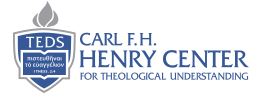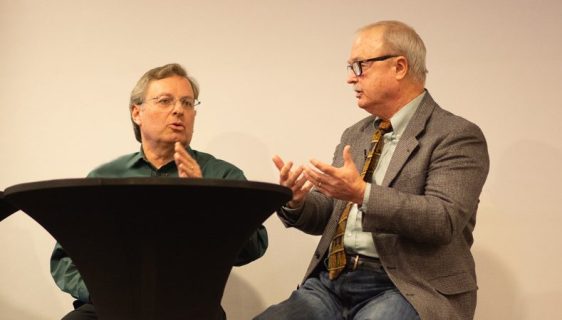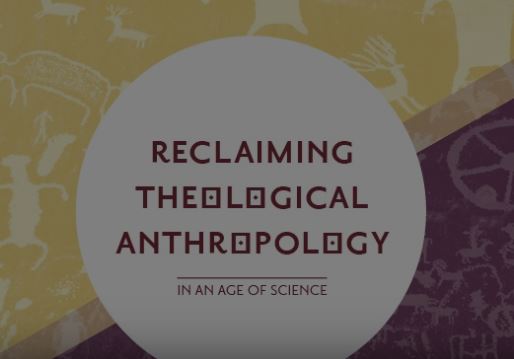This post was updated April 2019.
On January 17, 2019 I participated in a Symposium on the “intermediate state.” This Symposium explored the question of how best to think about what happens to a Christian between death and resurrection.
Symposium on the Intermediate State: J. P. Moreland and J. Richard Middleton
The Symposium was sponsored by the Carl F. H. Henry Center for Theological Understanding at Trinity Evangelical Divinity School, in Deerfield, IL.

My dialogue partner was philosopher J. P. Moreland, a famous supporter of “substance dualism” (the view that a person is composed of an immaterial soul and a body). He argued for the traditional view that our souls go to be with God (in heaven), awaiting the resurrection.

As a biblical scholar, I presented my position that the Bible doesn’t teach substance dualism, but rather a holistic view of the person, and that Scripture doesn’t clearly explain what happens between death and resurrection. I am therefore agnostic about the intermediate state.
My presentation focused on biblical exposition of these themes, with attention to 2 Corinthians 5:6–8 (absent from the body, present with the Lord) and Luke 23:39–43 (the thief on the cross). These two biblical texts are often taken as teaching an intermediate state. My exegesis of these texts attempted to show that they both address the final resurrection, not an intermediate state.
In the end, I don’t believe that we need to have an explanation of what happens between death and resurrection. It is sufficient to trust that God, who is faithful, will bring those who are in Christ to the resurrection.
The raw video feed of the Symposium is found here.
- Tom McCall (head of the Henry Center) opens the event at around the 16 minute mark.
- Steve Matthewson (a local pastor) introduces the topic and the speakers at about the 17 ½ minute mark.
- J. P. Moreland begins to speak just before the 21 minute mark.
- My presentation begins at the 43 ½ minute mark. I had slides with some visuals and lots of biblical texts. However, you will see that the projection system wasn’t working properly.
- The Q&A begins at the 1 hour and 11 ½ minute mark.
Our Focus Should be on the New Creation
My main point was that the intermediate state shouldn’t be the focus of our faith at all. Rather, biblical hope is for embodied resurrection life in the new heavens and new earth.
This is a point I made in my book on eschatology, A new Heaven and a New Earth: Reclaiming Biblical Eschatology (Baker Academic, 2014). In one of the chapters I included an excursus on the intermediate state (it was not central to the book’s argument), and I intended it merely as an exploration of the biblical evidence, not as an argument for a particular viewpoint.
Yet it is interesting that some reviews of my book brought up this excursus, often claiming to disagree with my position, even though my point was simply that there isn’t enough clear biblical evidence for me to affirm an intermediate state. Sometimes I wish hadn’t put that excursus in at all, since it seemed to sidetrack some readers. But other readers have told me it was important for them.
The Henry Center’s Exploration of Theological Anthropology
I was invited to participate in this Symposium on the intermediate state not primarily because of my work on eschatology, but due to my prior involvement in the Henry Center’s three-year Creation Project.
Each summer the Center has had a conference (the Dabar Conference) on some aspect of the theme of Creation, and I have been involved every year.
In the first two years I was a paper respondent, in 2016 to Old Testament scholar C. John (“Jack”) Collins and in 2017 to philosopher-theologian William (“Billy”) Abraham, two very wonderful scholars, both of whom I was delighted to get to know.
This year I wrote a keynote paper for the Dabar Conference (June 2018), entitled “Death, Immortality, and the Curse: Interpreting Genesis 2–3 in the Context of the Biblical Worldview,” with two respondents (one a biblical scholar, the other a theologian).

The theme of the Creation Project (and thus of the Dabar Conference) this year (2018-19) is Reclaiming Theological Anthropology in an Age of Science. But the Project extends beyond the Dabar conferences, and involves numerous other events.
It was because of my analysis of human mortality expressed in the Dabar paper (and a shorter version called “Humans Created Mortal, with the Possibility of Eternal Life,” which was published on the Henry Center website) that I was invited to present my views at the upcoming Symposium.
This is the description of the Symposium (along with presenter bios) on the Henry Center website:
The resurrection of the body is one of the central doctrinal claims of the Christian faith. It is also the source of Christian hope when faced with the death of a loved one.
But what happens between now and then? When a child asks their parent where a departed loved one is “now,” how should Christians respond?
Do the souls of those who have died in faith go to be with the Lord now, awaiting to be reunited with their resurrected bodies?
Or are traditional Christian beliefs in an immaterial soul that is separable from the body misplaced—an unscriptural incursion of Platonic metaphysics that has misshaped our expectations of the afterlife?
The discussion will be followed by a pastoral response and extended audience Q&A on the theological and pastoral implications of the different views.

J. P. Moreland (PhD University of Southern California) is a Distinguished Professor of Philosophy at Talbot School of Theology, Biola University. He is the author or editor of over a dozen books, including The Soul: How We Know It’s Real and Why It Matters, The Blackwell Companion to Substance Dualism, and Philosophical Foundations for a Christian Worldview.

J. Richard Middleton (PhD Vrije Universiteit in Amsterdam) is Professor of Biblical Worldview and Exegesis at Northeastern Seminary. He is the author of A New Heaven and a New Earth: Reclaiming Biblical Eschatology, and The Liberating Image: The Imago Dei in Genesis 1.
| Date | Thursday, January 17, 2019 |
|---|---|
| Time | 11am — 12:30pm CST |
| Location | Main Campus
Hinkson Hall |
This event was made possible through the support of a grant from Templeton Religion Trust.


Continue to fight the good fight, Dr Middleton!
Pingback: Daily Gleanings (18 April 2019) - J. David Stark